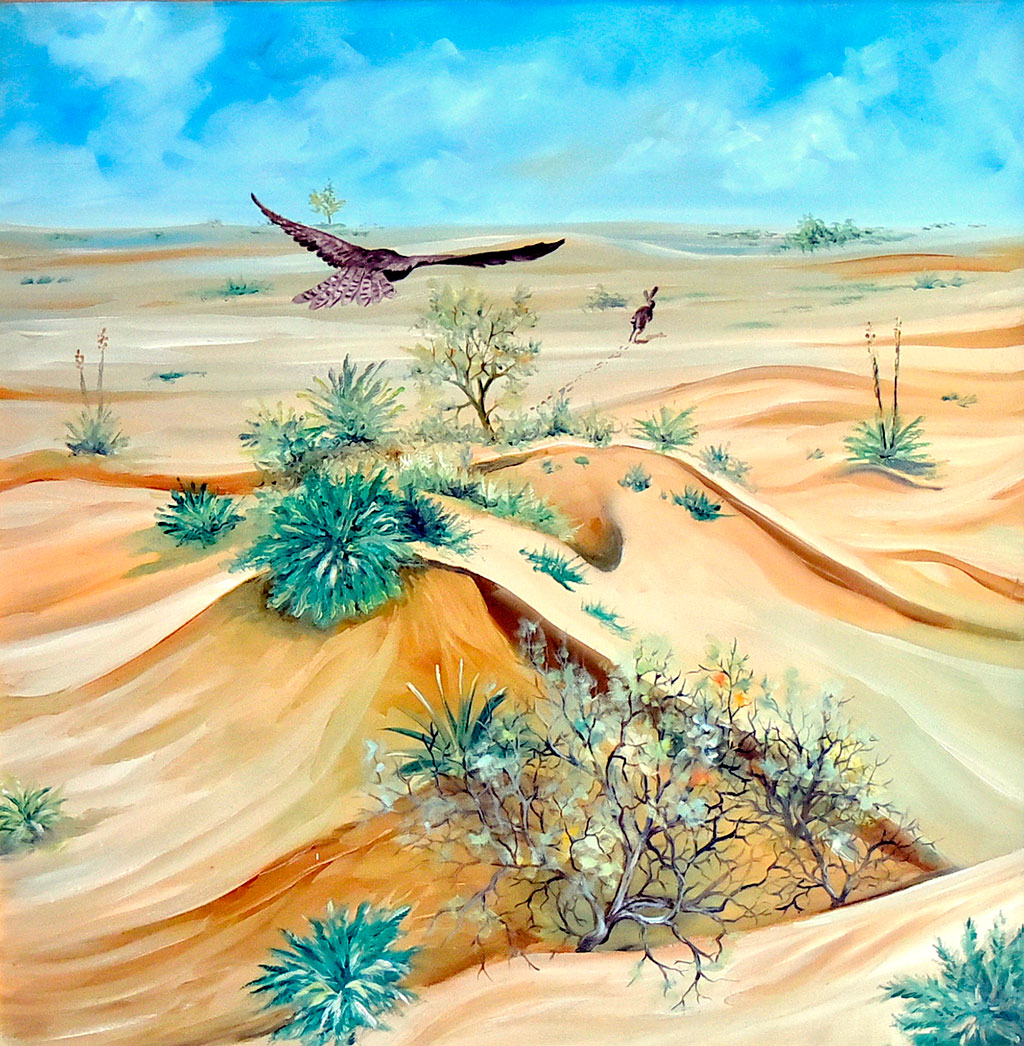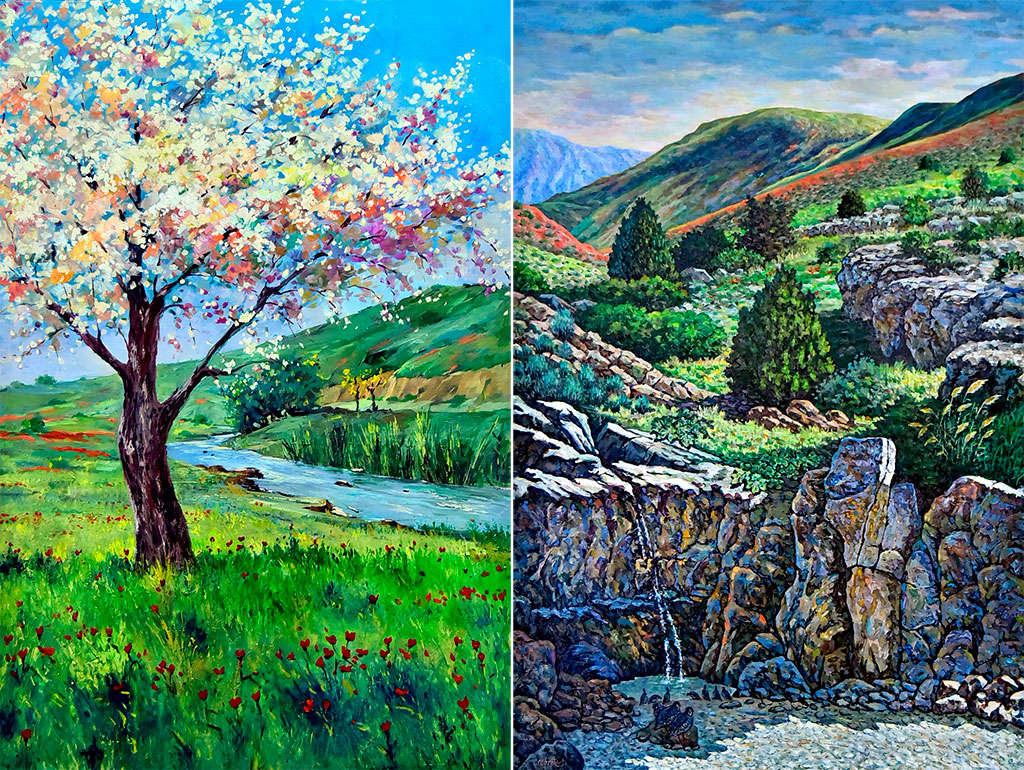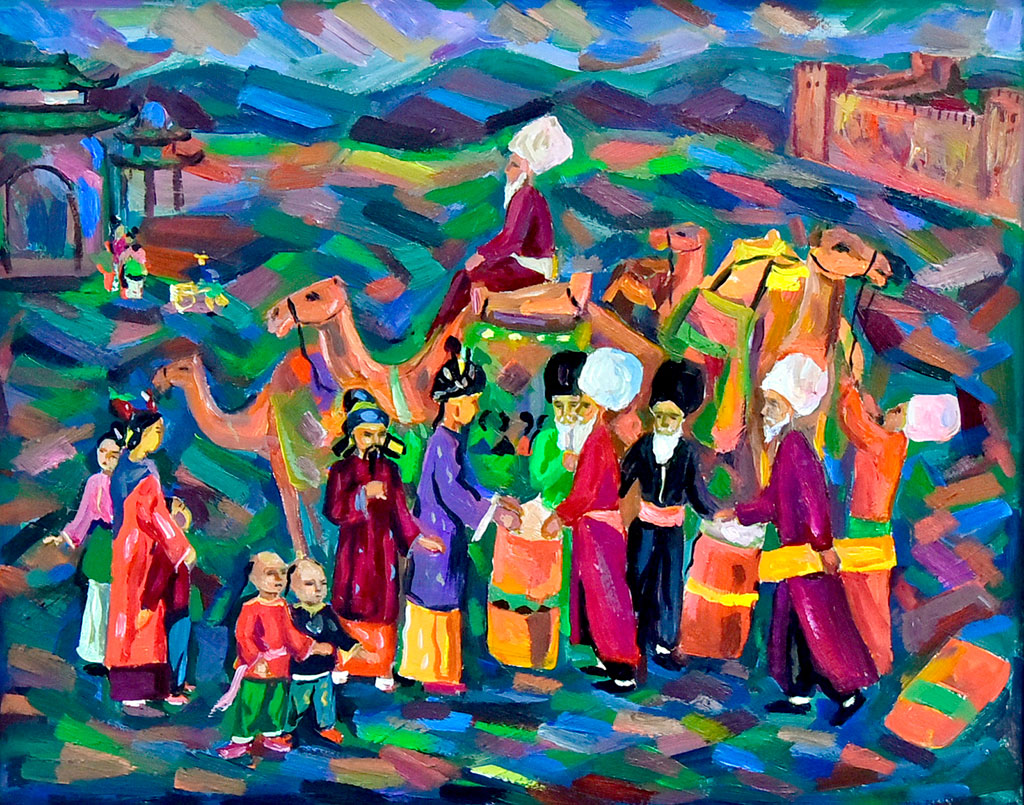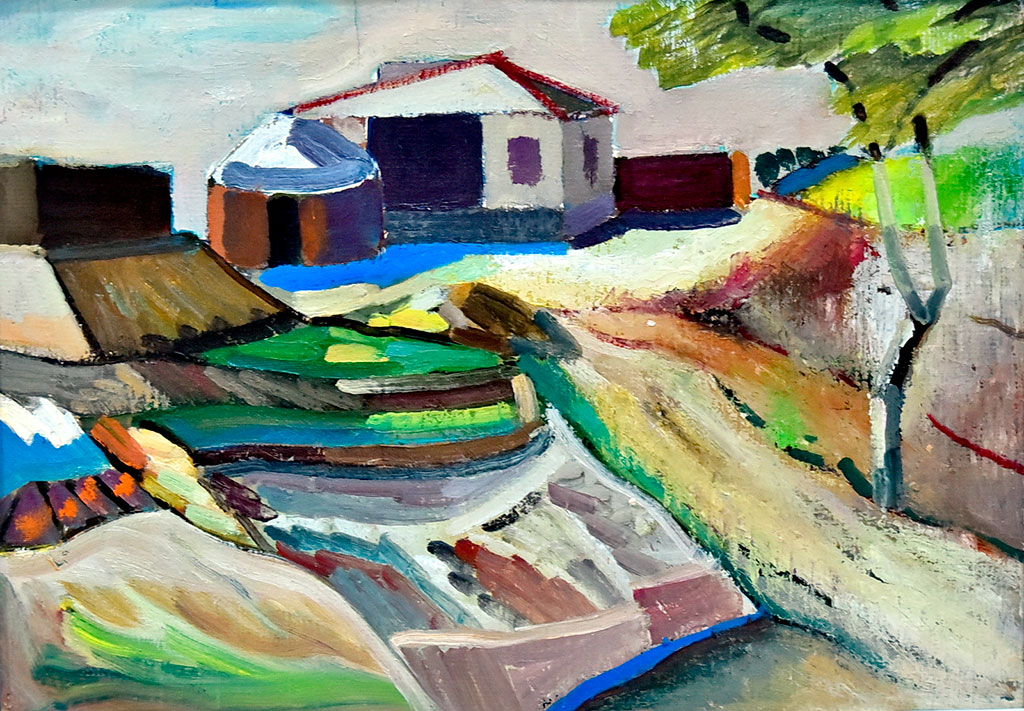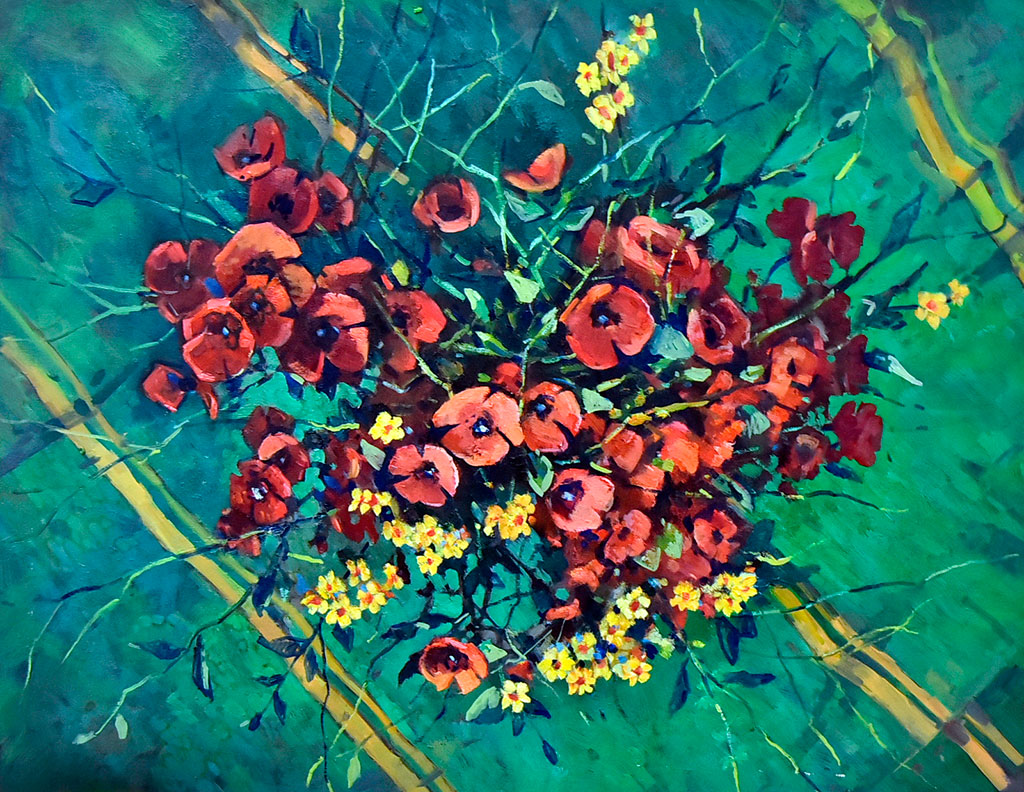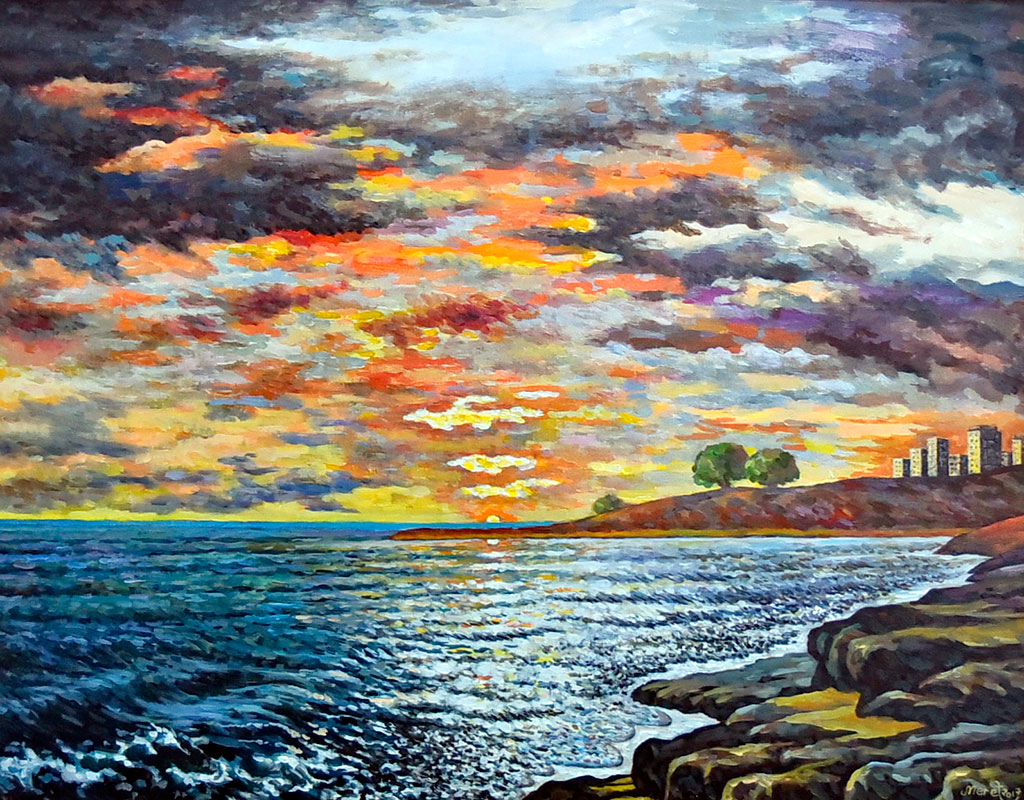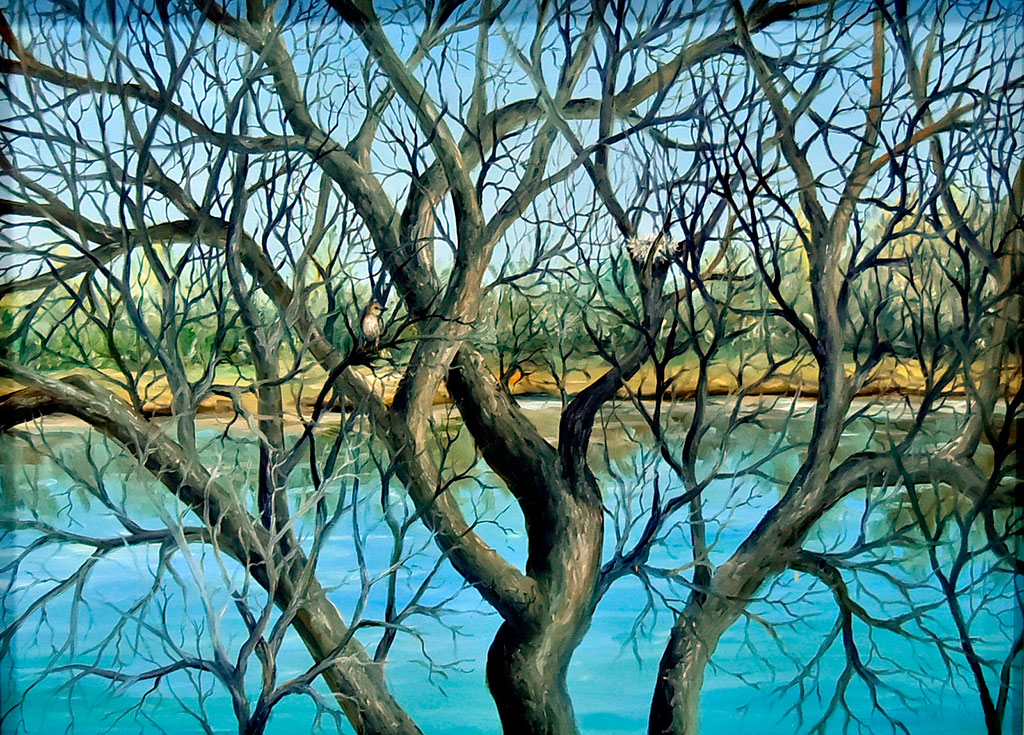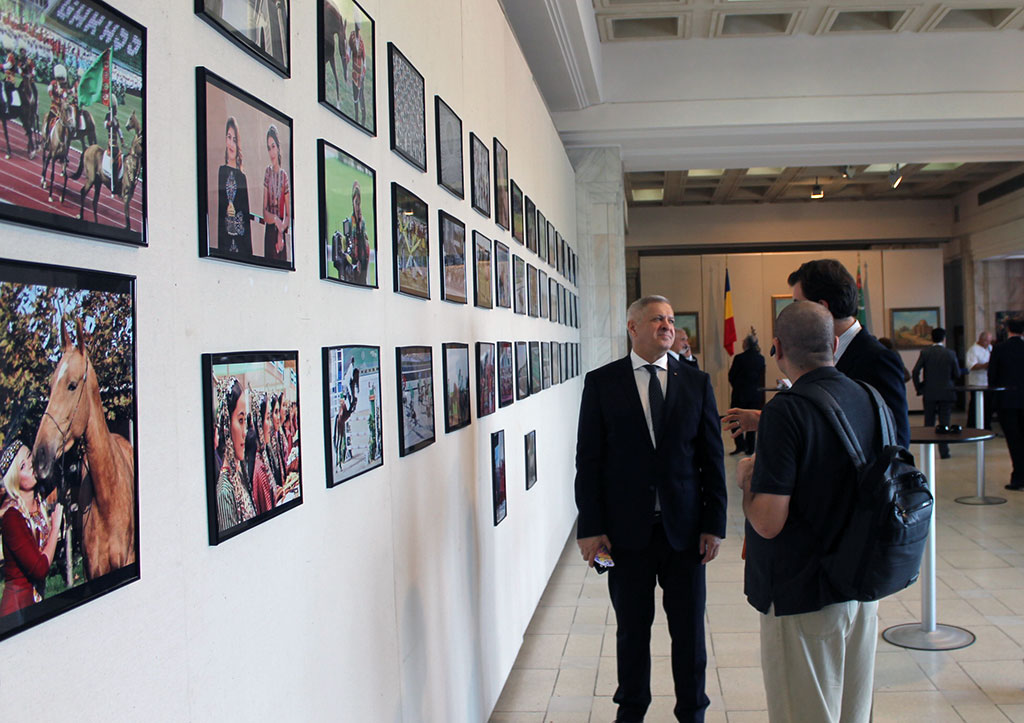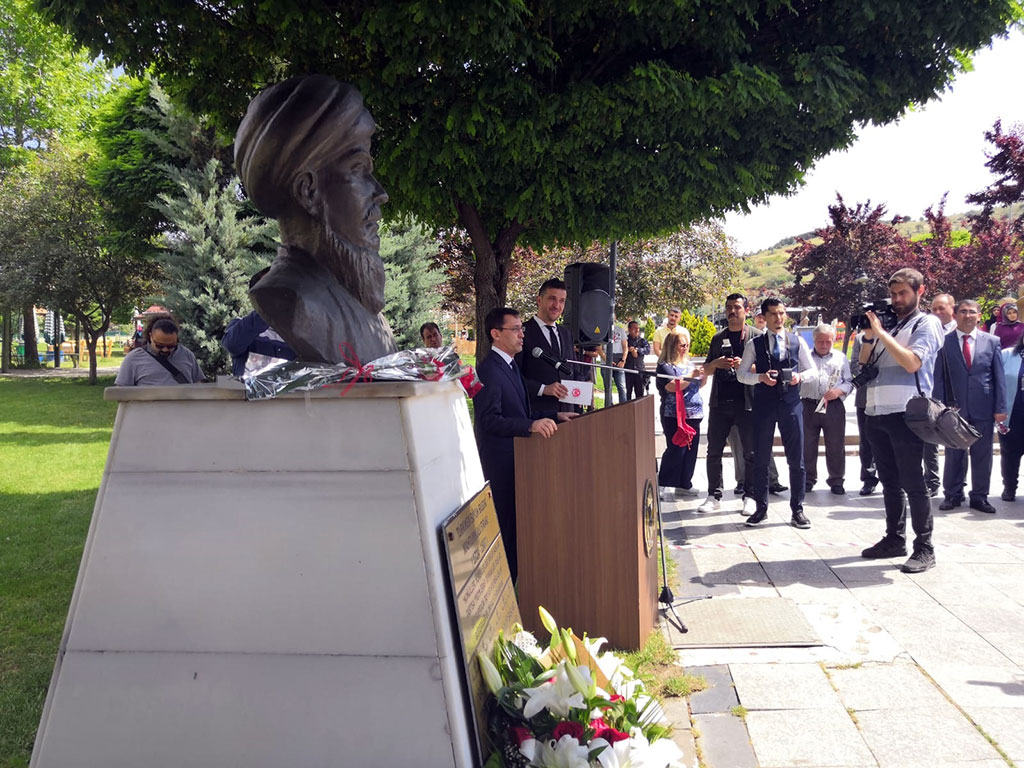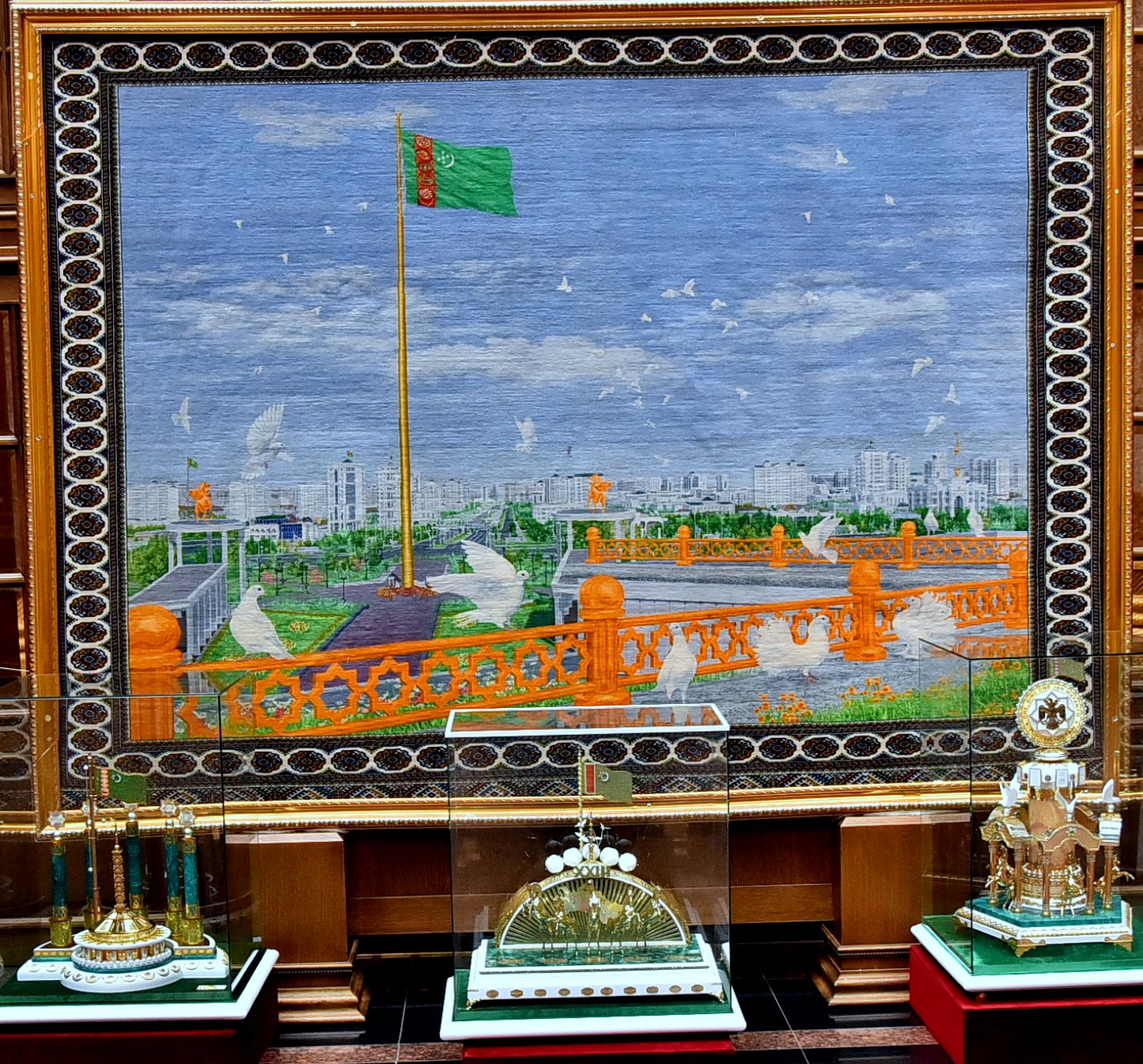Motherland was a main thread that ran through the paintings presented at the themed exposition that was organized at the capital’s Expo Center. A proud falcon is spreading his strong wings and majestically rising over the desert on The Desert, a painting by Berdisahet Kurbansahetov. The author believes that only the uninitiated may see the desert as monotonous and desolate – and proves them wrong with his next work that depicts falcon hunting a hare. In his attempt to escape the bird of prey, the hare leaves fishbone-like footsteps on the sand. Which one of the two has a good deal of luck, the chaser or the victim, will be known in the next few moments that were not depicted by the painter. The desert can tell a lot and share many interesting facts about itself and its inhabitants, if one understands it. The painter has a realistic approach in presenting the story and uses scraggy, grey and brown colors common to desolate areas, but the painting stands out among other works due to its dramatic plot.
Painter Natalya Kalugina has a different vision of the desert: hers is painted in a traditional yellow and blue palette. Natalya Kalugina’s paintings don’t have breathtaking hunting scenes, the main character in her works is a touching little bush that is living its life, or – more precisely – struggling to survive in this dry land. However, while it is still young, beautiful, it enjoys its existence in the world.
Desert scenery is displayed side by side with mountain landscapes. The Mountain Creek is the name of the painting by the people’s painter of Turkmenistan, Meret Gylyjov, where he depicts, in his usual brush stroke technique, a steep rock with a streamlet of pure water springing out of it. This is crucial for travelers, hunters and resident wildlife species.
Another work presented by Meret is Spring. Foothills of the Kopetdag Mountains are amazingly beautiful during this time of the year, and painters journey into the country for plein-air painting, to depict poppies that cover the hills like a fantastic carpet, while skies of lapis lazuli add an amethyst hue to the color of the mountain peaks. All this beauty can be seen on the painting by Meret Gyyjov.
A charming story about his fellow villagers is presented by Babageldi Hojagulyyev in a series of seven paintings. They are united by the spirit of friendship and optimism. In his work called Boys, five teenagers on four donkeys are transporting brushwood. They are engaged in a lively conversation, laughing and flailing their arms. The land that the donkeys are walking on is painted in colorful strokes that infuses the painting with joy and happiness that may be felt only during cloudless childhood.
The same technique is used in The Bride. A group of girls and boys are a part of a motley crew of a wedding procession. The children seem so dedicated to the honorable mission that even a puppy is mimicking them, walking pompously alongside. Colorful flecks around the bride and the crowd accompanying her recapture the atmosphere of happiness that her family shares with the whole village.
This painting is seemingly contrasted by The Old Man and Birds, a work by Babageldi Hojagulyyev, where an old man is captured feeding pigeons. The twilight is fading into darkness, but the old man’s charming smile and his awe towards the tamed pigeons fill the canvas with the energy of kindness.
Beautiful parts of our country, astonishing landscapes, sincere and hospitable people, smiling faces of children, unique traditions and the rhythms of accomplishments celebrated in these paintings definitely set the positive mood.
Painter Natalya Kalugina has a different vision of the desert: hers is painted in a traditional yellow and blue palette. Natalya Kalugina’s paintings don’t have breathtaking hunting scenes, the main character in her works is a touching little bush that is living its life, or – more precisely – struggling to survive in this dry land. However, while it is still young, beautiful, it enjoys its existence in the world.
Desert scenery is displayed side by side with mountain landscapes. The Mountain Creek is the name of the painting by the people’s painter of Turkmenistan, Meret Gylyjov, where he depicts, in his usual brush stroke technique, a steep rock with a streamlet of pure water springing out of it. This is crucial for travelers, hunters and resident wildlife species.
Another work presented by Meret is Spring. Foothills of the Kopetdag Mountains are amazingly beautiful during this time of the year, and painters journey into the country for plein-air painting, to depict poppies that cover the hills like a fantastic carpet, while skies of lapis lazuli add an amethyst hue to the color of the mountain peaks. All this beauty can be seen on the painting by Meret Gyyjov.
A charming story about his fellow villagers is presented by Babageldi Hojagulyyev in a series of seven paintings. They are united by the spirit of friendship and optimism. In his work called Boys, five teenagers on four donkeys are transporting brushwood. They are engaged in a lively conversation, laughing and flailing their arms. The land that the donkeys are walking on is painted in colorful strokes that infuses the painting with joy and happiness that may be felt only during cloudless childhood.
The same technique is used in The Bride. A group of girls and boys are a part of a motley crew of a wedding procession. The children seem so dedicated to the honorable mission that even a puppy is mimicking them, walking pompously alongside. Colorful flecks around the bride and the crowd accompanying her recapture the atmosphere of happiness that her family shares with the whole village.
This painting is seemingly contrasted by The Old Man and Birds, a work by Babageldi Hojagulyyev, where an old man is captured feeding pigeons. The twilight is fading into darkness, but the old man’s charming smile and his awe towards the tamed pigeons fill the canvas with the energy of kindness.
Beautiful parts of our country, astonishing landscapes, sincere and hospitable people, smiling faces of children, unique traditions and the rhythms of accomplishments celebrated in these paintings definitely set the positive mood.




